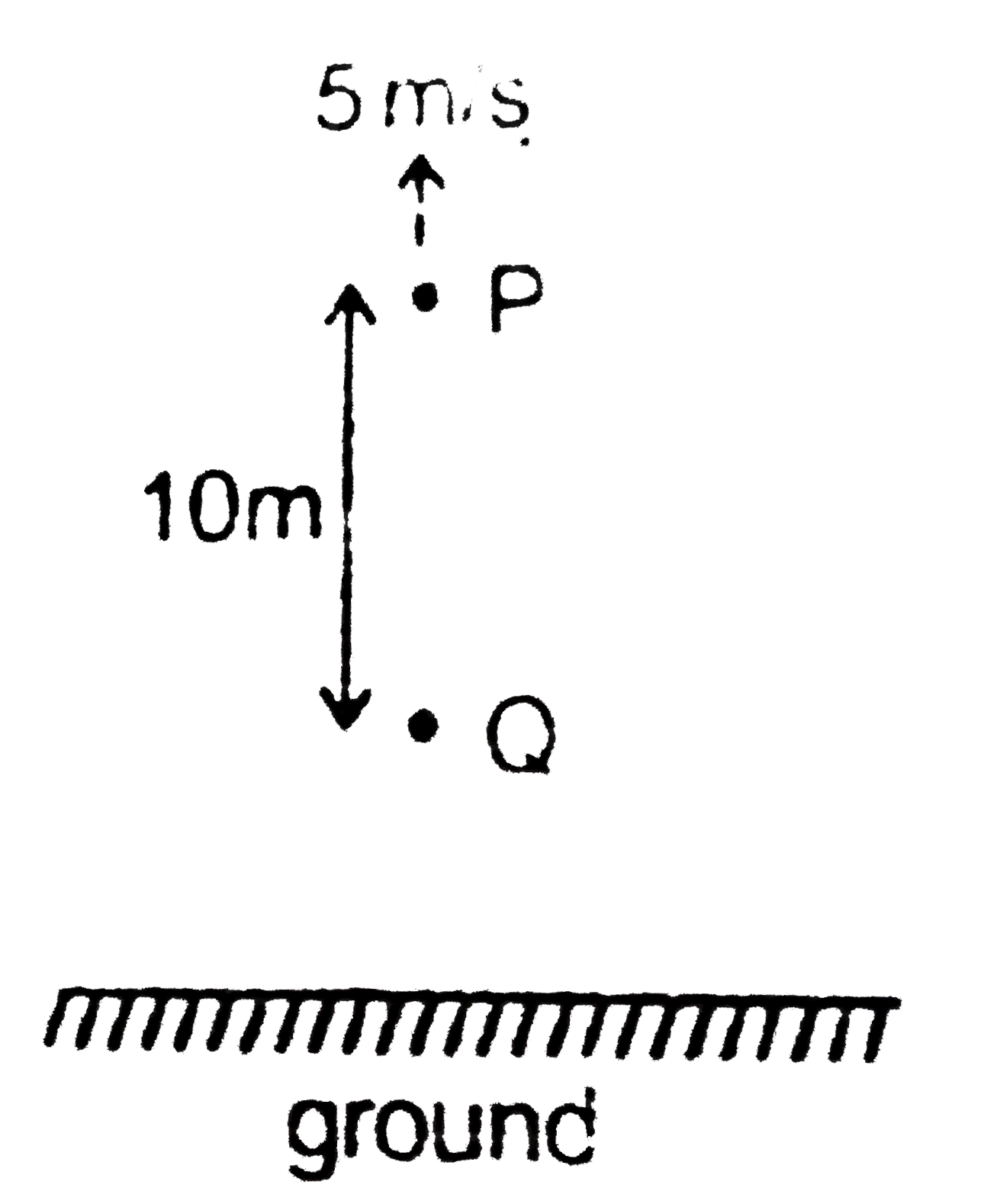A ball is thrown straight upward with an initial speed of 12 m/sec. After 1 sec velocity & displacement will respectively be-
2 m/sec, 7 m
7m, 2 m/sec
2.20 m/s, 7.10 m
None
To solve the problem step by step, we will first calculate the velocity of the ball after 1 second and then calculate the displacement.
Step 1: Calculate the final velocity after 1 second
1. Identify the given values:
- Initial velocity (u) = 12 m/s (upward)
- Acceleration (a) = -g = -9.8 m/s² (downward, due to gravity)
- Time (t) = 1 s
2. Use the formula for final velocity:
v=u+at
where:
- v = final velocity
- u = initial velocity
- a = acceleration
- t = time
3. Substitute the values into the formula:
v=12m/s+(−9.8m/s2×1s)
v=12m/s−9.8m/s
v=2.2m/s
Step 2: Calculate the displacement after 1 second
1. Use the formula for displacement:
s=ut+12at2
where:
- s = displacement
- u = initial velocity
- a = acceleration
- t = time
2. Substitute the values into the formula:
s=(12m/s×1s)+12(−9.8m/s2)(1s)2
s=12m+12(−9.8m/s2)(1)
s=12m−4.9m
s=7.1m
Final Answer:
- The final velocity after 1 second is 2.2 m/s (upward).
- The displacement after 1 second is 7.1 m (upward).
---
- Initial velocity (u) = 12 m/s (upward)
- Acceleration (a) = -g = -9.8 m/s² (downward, due to gravity)
- Time (t) = 1 s
v=u+at
where:
- v = final velocity
- u = initial velocity
- a = acceleration
- t = time
v=12m/s+(−9.8m/s2×1s)
v=12m/s−9.8m/s
v=2.2m/s
s=ut+12at2
where:
- s = displacement
- u = initial velocity
- a = acceleration
- t = time
s=(12m/s×1s)+12(−9.8m/s2)(1s)2
s=12m+12(−9.8m/s2)(1)
s=12m−4.9m
s=7.1m
- The final velocity after 1 second is 2.2 m/s (upward).
- The displacement after 1 second is 7.1 m (upward).
Topper's Solved these Questions
- BOOK - MOTIONCHAPTER - ONE DIMENSION MOTIONEXERCISE - EXERCSE -1 (Section - A : Distance, Displacement, Velocity and Acceleration, Equation of Motion )26videos
ONE DIMENSION MOTION
- BOOK - MOTIONCHAPTER - ONE DIMENSION MOTIONEXERCISE - EXERCSE -1 (Section - B : Motion under Gravity)11videos
ONE DIMENSION MOTION
- BOOK - MOTIONCHAPTER - NLM & FRICTIONEXERCISE - EXERCISE-4 ( LEVEL-II)15videos
NLM & FRICTION
- BOOK - MOTIONCHAPTER - OPTICSEXERCISE - Exercise45videos
OPTICS
Similar Questions
A ball is thrown upward with an initial velocity of 80ms−1. After how much time will it return to ground ? Draw velocity-time graph for the ball and find from the graph
(a) the maximum height attained by ball and
(b) height of the ball after 12s. Take g=10ms−2.View SolutionA ball is thrown vertically upward with a speed of 20 m/s. Draw a graph showing the velocity of the ball as a function of thime as it goes up and then comes back.
View Solution
Knowledge Check
- Question 1 - Select One
A ball thrown vertically upwards with an initial velocity of 1.4m/s. The total displcement of the ball is
A22.4cmBzeroC44.8mD33.6m - Question 2 - Select One
A ball thrown vertically upwards with an initial velocity of 1.4 m/s returns in 2s. The total dispalcement of the ball is
A22.4 cmBzeroC44.8 mD33.6 m - Question 3 - Select One
A ball is thrown vertically upward with a velocity of 20 m/s . After 3s , the magnitude of its displacement is (take g = 10 m/s2)
A15 mB25 mC10 mD20 m
A ball is thrown vertically upwards with an initial velocity of 5m/sec from point P as shown Q is a point 10m vertically below the point P. Then the speed of ball at point Q will be : (take g=10m/s2 and neglect air resistance)
 View Solution
View SolutionAn object is thrown upward with a vertical velocity of 128 ft./sec. It will return in
View SolutionA ball is thrown straight upward with a speed v from a point h meter above the ground. The time taken for the ball to strike the ground is
View SolutionA stone is shot straight upward with a speed of 20 m/sec from a tower 200 m high. The speed with which it strikes the ground is approximately
View SolutionA ball is thrown upwards from the ground with an initial speed of u. The ball is at height of 80m at two times, the time interval being 6 s. Find u. Take g=10m/s2.
View Solution

